This morning I saw something on eBay that I nearly bid on, but just before I hit the bid button, I changed my mind. The item in question is a Gretsch Tone Divider.
Source: EARWAXX RECORDS And MORE
This interesting piece of electronic equipment, is something that I hadn’t seen before. It appears to have been made specifically for saxophones and clarinets, and allows players to alter their sound in a variety of ways.
Shades of the Selmer’s Varitone perhaps. Or similar to Vox’s attempt to amplify the band, through their products marketed under the name Ampliphonic. All these products—among others—were produced at approximately the same time.
Here is how the seller describes the Gretsch Tone Divider that he/she is selling:
This auction is for: GRETSCH TONE DIVIDER #2850 w/ ESS and ESS Case RARE VINTAGE Clarinet Saxophone
Gretsch Tone Divider in excellent condition in original Ess and Ess Case (Brooklyn NY). No way to test this piece completely, but when plugged in the light comes on and I assume it works just fine. Plug in your clarinet or saxophone and manipulate the sound to create reverb, tremolo, fuzz, and other variations of sound limited by your imagination. Looks to be extremely versatile in its functions. A high end piece of equipment in its day (pre-1967) and made by one of the best. Unit in great shape with a piece of tape on the side (for no apparent reason), and sticker on the end. It is clean with no damage of any sort. Velvet padded case also in excellent condition with ESS and ESS sticker on inside. Has “AL” sticker on outside and some sticker residue.
I do not know everything about this piece, but it is a very hard-to-find desireable item for vintage music equipment collectors. The case itself is a rare item as well. Please feel free to email with questions and we will do all we can to answer them! Unit and case weighs about 9 pounds.
Source: EARWAXX RECORDS And MORE
The auction for this Gretsch Tone Divider is nearly over. It ends later today.
When I first saw the auction there was only 1 bid on the item, but by the time I had done some research, there were 3 bids. Currently the high bid is $24.49.
If you lose out on this one, but really want to get a Tone Divider, there is another one on eBay right now as well. The end date for that auction is December 13. Bids on it are to start at $55.00.



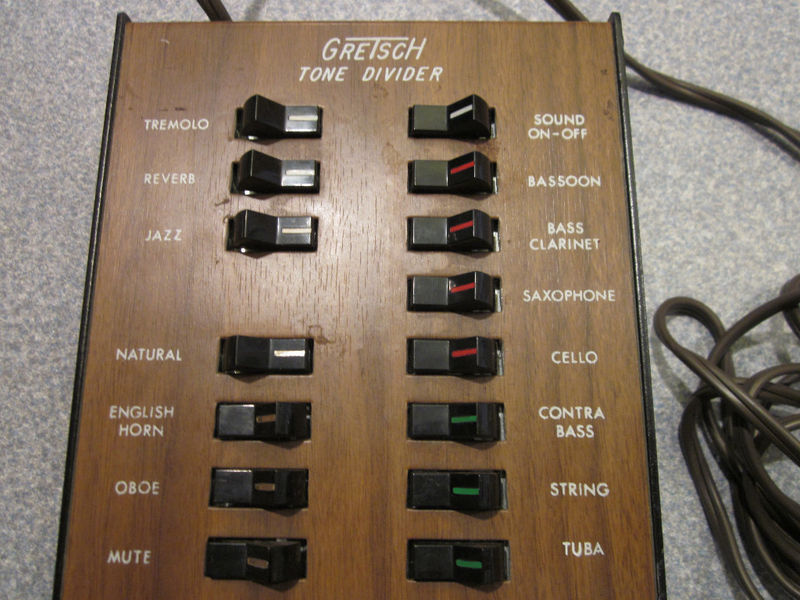

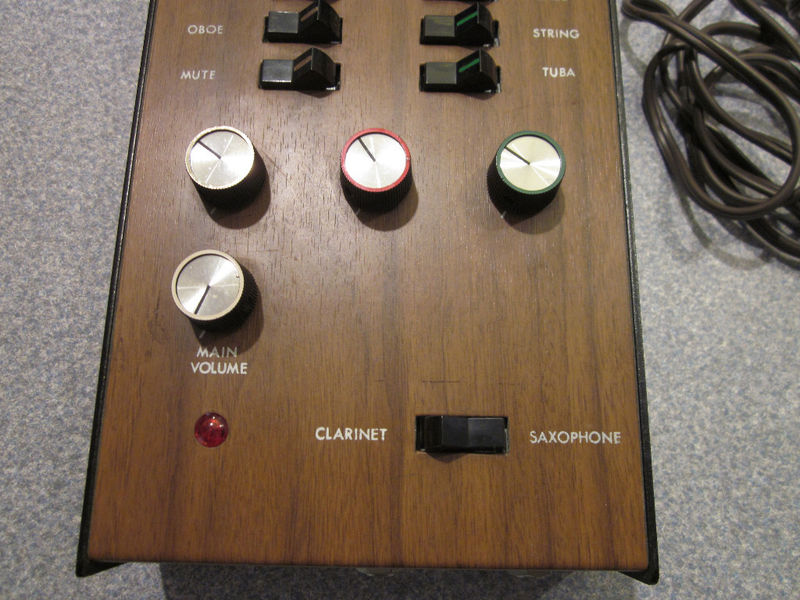

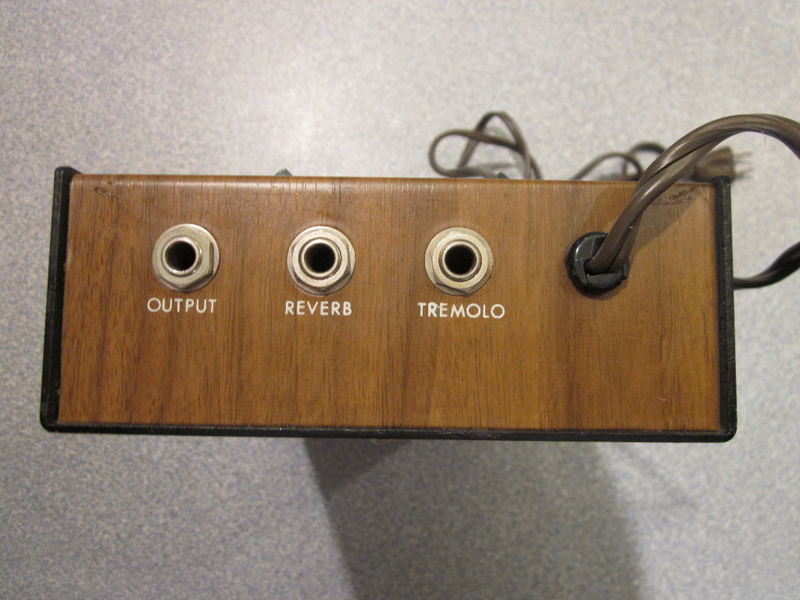

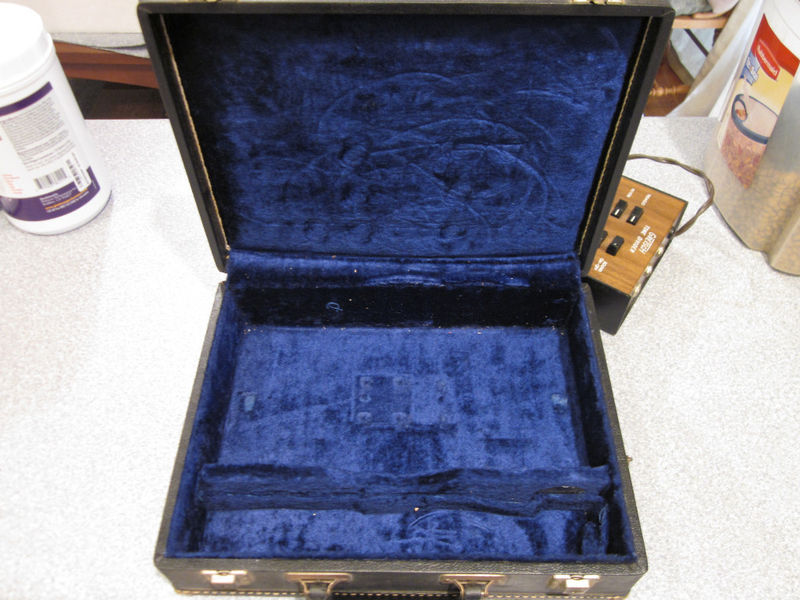
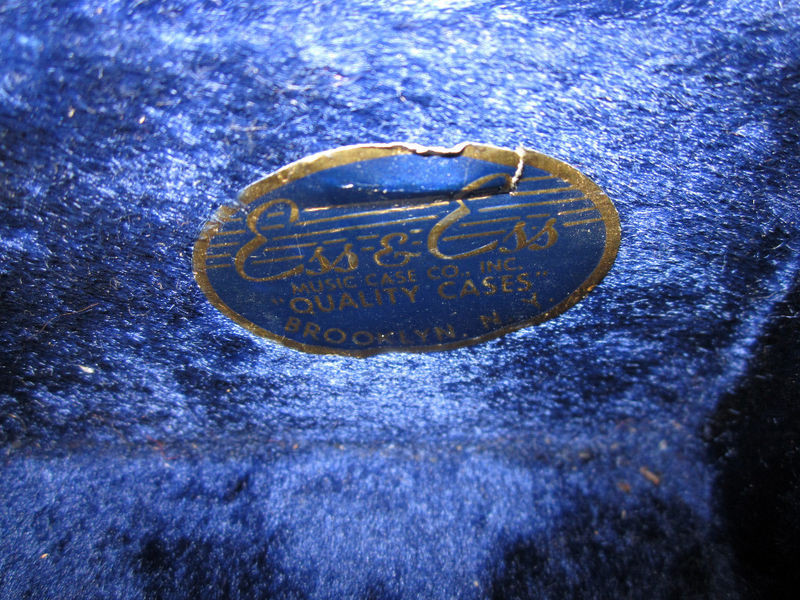




Update: This Gretsch Tone Divider sold for $56.00 and attracted 6 bids.
The other one—the one I didn’t show pictures of, but only linked to—sold with 1 bid for $55.00.
You pretty much have it right, Helen. These are all of a genre of signal processors to accessorize the aging wind instrument player with sounds like those “hip” electric guitarists. I shouldn’t be so snarky about it, but that’s more or less how they were marketed.
Unless you are a serious collector or electronics hobbyist, you were probably wise to think twice. Even in pristine condition, the components were not exactly military spec and I’m sure many will have dried out and need to be replaced.
The other thing is that the jacks are 1/4″ phone, like an electric guitar. Maybe that means they expect high impedance, maybe line level, maybe ? Impedance matching can mean the difference between a nifty toy or an odd sounding radio receiver. 😯 In the mean time, most modern microphones and pickups (except guitars) include circuits to match them to a standard balanced low impedance.
When the price was under 10 bucks, I thought what the hell. But when I saw what the seller wanted to charge for shipping, I thought: forget it.
My next door neighbour has an electronics repair business, so I thought even if it doesn’t work, I could get him to take a look at it, but I wasn’t going to spend a lot of money on this thing. Like you said, unless someone is a serious collector or electronics hobbyist, it really isn’t likely worth it.
Since I play with electronic effects now all the time, my original thinking was that this might be fun to play around with. But since all my gear is new, I have XLR connectors on everything. The idea of spending the same amount of $ on a 1/4″ jack device, that I would on new gear, didn’t make sense. Also, I figured that this thing has at best a 50/50 chance of working properly within the band setting. I also couldn’t find any info on the product, to see if it might be missing parts.
I am trying to remember what King’s electronic device was called. I also happened upon an older Buescher ad as well IIRC. I’m just not using the right computer now, and don’t have the files saved on this one. My memory just isn’t as good as my buddy Pete’s (formerly of saxpics fame). I think he remembers almost everything he ever sees/reads.
These are, as you implied, re-badged guitar effects. Effects boxes made for guitar and voice worked just fine then for mid-range wind instruments, and continue to do so today. Some of them have issues with sounds outside their normal range — for example, my TC Helicon Harmony G-XT has problems with notes in the upper trumpet range, so I have to feed it a signal an octave lower and let it harmonize up from there, rather than harmonizing down from the original pitch. The Digitech Vocalist Live 2 had no such problems, but it was a much less versatile (not to mention bigger and more expensive and ultimately flaky) unit.
Unless you want vintage for the sake of vintage, there’s really no reason not to go with current guitar effects. At least you know that way when you break one you can replace it off the shelf.
Mal-2, I was wondering, are there any drawbacks with using guitar pedals on the sax? IIRC, I thought that there could be, but I don’t remember what they were. I know that the pedals use 1/4″ jacks, perhaps that’s what I was cautioned about???
The only problems I’ve had have been related to pedals that do some sort of intelligent processing (like a vocal harmonizer) when they are unable to find my single note due to excessive bleed of other instruments into my mic. This is why I was looking for a neck pickup — I’d feed THAT into the harmonizer (or that and the real mic mixed together) since it should be better isolated from external noise. I have not been able to actually test this thus far. Instead, if I need to sound like a whole horn section, I use my EWI to feed the harmonizer. That way, bleed is not a problem at all since there is no microphone involved.
A dynamic microphone should be “hot” enough to drive an instrument-level input directly. If you use a condenser, you’ll need a pre-amp that matches up with it since a guitar pedal is not going to supply phantom power. Either way, you will have to convert from XLR to 1/4″ somewhere along the way, but this isn’t a major problem.
Thanks for that Mal. So no problems with guitar pedals then. Good to know.
Interesting what you say about the vocal pedals. I’ve been using my Boss Vocal pedal for more than a year now with no problems. I just use a clip-on, and have no problems with bleed-through. Even when the guys are what I call “stupid loud” at rehearsal, it hasn’t had a problem picking only my signal. :scratch: